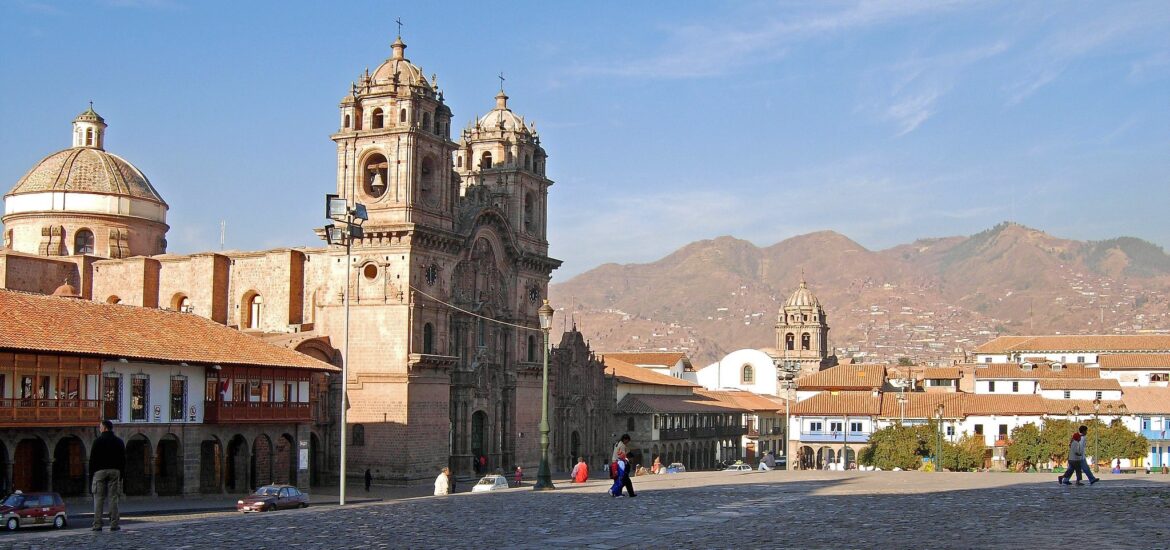Welcome to Cusco, the capital of the Inca Empire—a city where history and beauty unite! Our charming city shows the Incas, the greatest empire in the Americas, and their greatest achievements. However, this powerful empire ended because of the Spanish conquest.
After the fall of the Incas, Spaniards brought their traditions, culture, religion, and more. One aspect that many pass over is the strong Spanish influence in their architecture. You can see the blend of inca and colonial architecture as you walk through Cusco’s streets.
Join us as we explore the wonderful world of the Peruvian Andes and the Spanish colonial culture in Cusco. This blog will take you on a thrilling journey through history and the clash of two cultures that blend to create something fantastic, let’s go!
Cusco: The Inca Capital
Before it became famous for its colonial architecture, Cusco was the center of the powerful Inca Empire, which ruled much of South America from the 13th to the 16th century. The Incas were master builders, and now many know their ability to create earthquake-proof structures using massive stones cut with incredible precision.
When the Spanish arrived in the 1530s, they conquered the city but couldn’t destroy its strong foundations. Instead, they reused these pre-Columbian structures to build their churches, homes, and government buildings. This mix of styles—Inca at the base, Spanish on top—is what makes Cusco so special.
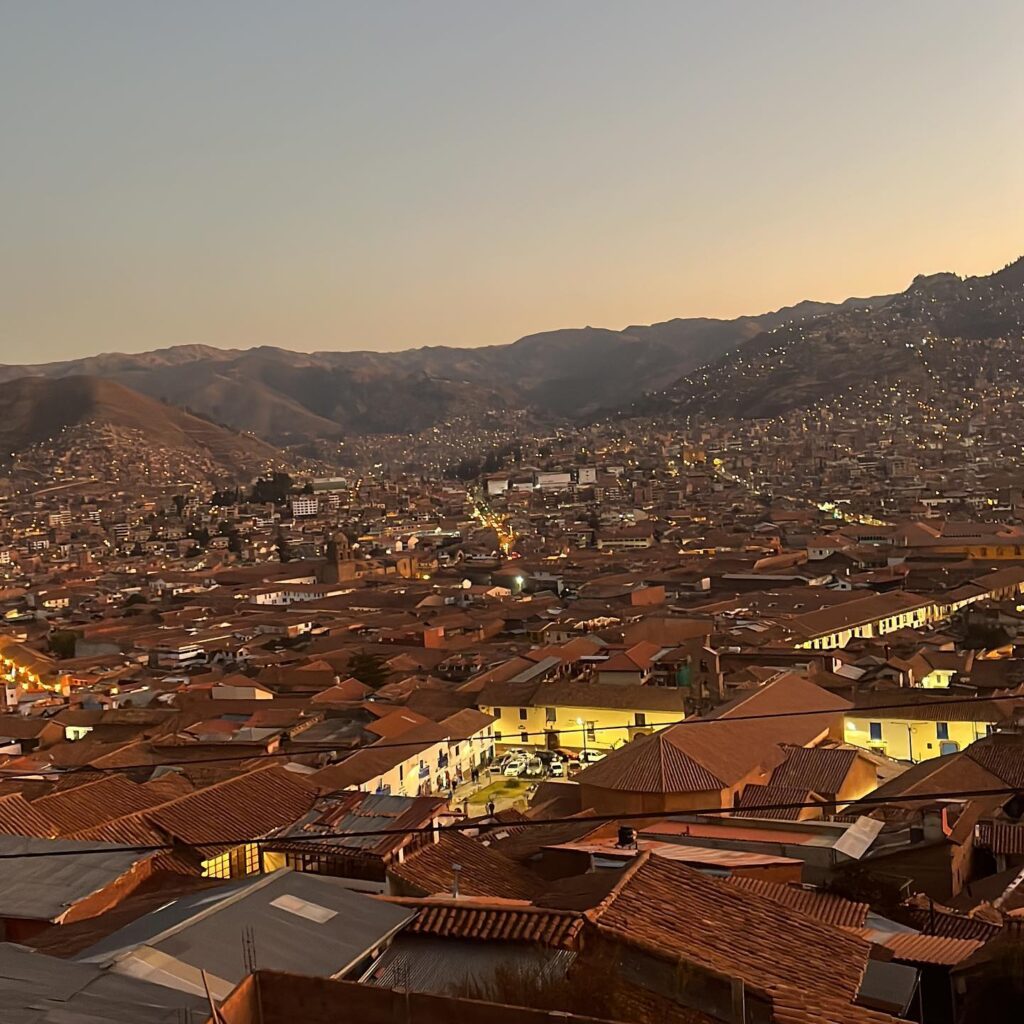
Francisco Pizarro led the Spanish conquest of Peru. Despite fierce resistance from the Incas, the Spanish took over and transformed the city into a colonial hub. They destroyed many Inca temples but kept the sturdy foundations for their new constructions.
Trivia: The Incas believed Cusco was the center of the universe, that’s why they called it “The Navel of the world”. They designed Cusco’s streets to reflect the constellation patterns in the sky, so they could see the insight of the cosmos!
Andean Colonial Places in Cusco
Plaza de Armas: The Heart of Cusco
The Plaza de Armas or the main square in Cusco is the perfect starting point to explore Cusco’s architecture. This plaza is in the city’s historic center, a bustling area is surrounded by colonial buildings with carved wooden balconies and grand stone facades.
Highlights
Cusco Cathedral: Built between 1559 and 1654, this cathedral is one of the most impressive examples of Andean Colonial Architecture. Its walls are made from stones taken from the nearby Inca site of Sacsayhuaman. Inside, you’ll find a treasure trove of religious art, including a painting of the Last Supper with a guinea pig on the table—a nod to local culture.
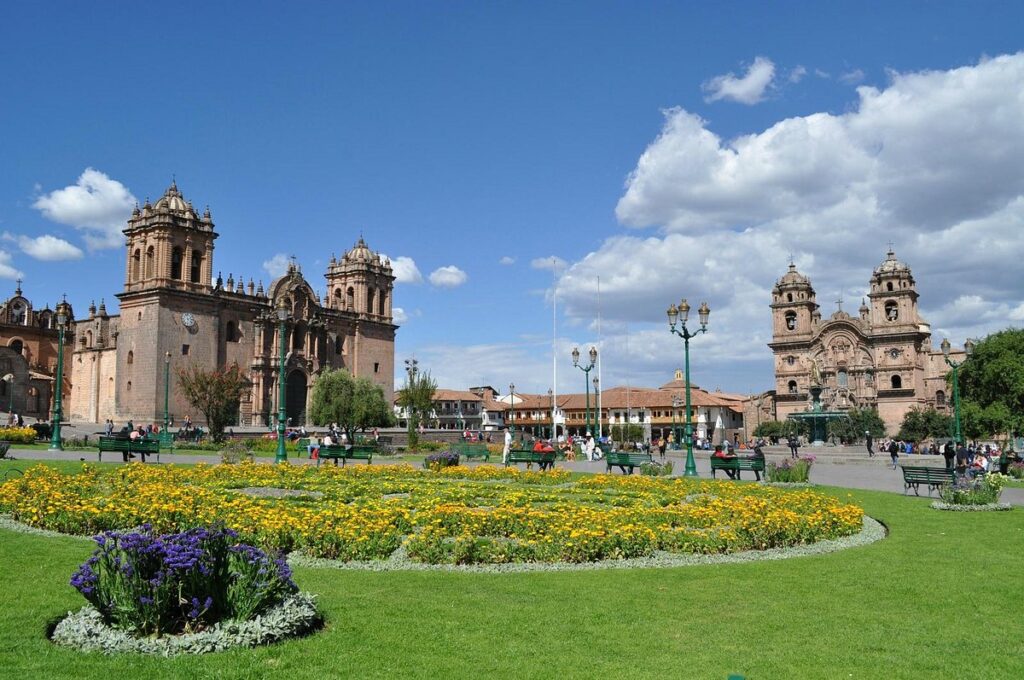
La Compañía de Jesús: This Jesuit church is a masterpiece of Baroque-style architecture. Its ornate facade and golden interior are stunning. The church’s construction caused tension with the cathedral’s builders, as it threatened to outshine the older structure.
Did You Know? Local artisans crafted these wooden balconies around the Plaza de Armas, and are original from the colonial period.
Coricancha: From Gold to Glory
The Coricancha, or Temple of the Sun, was one of the most important Inca temples. Manco Capac, the first Inca built it, and then Pachacutec rebuilt it. The temple’s walls shimmered with gold. Its design was truly clever, as it aligned with the solstices and could withstand earthquakes.
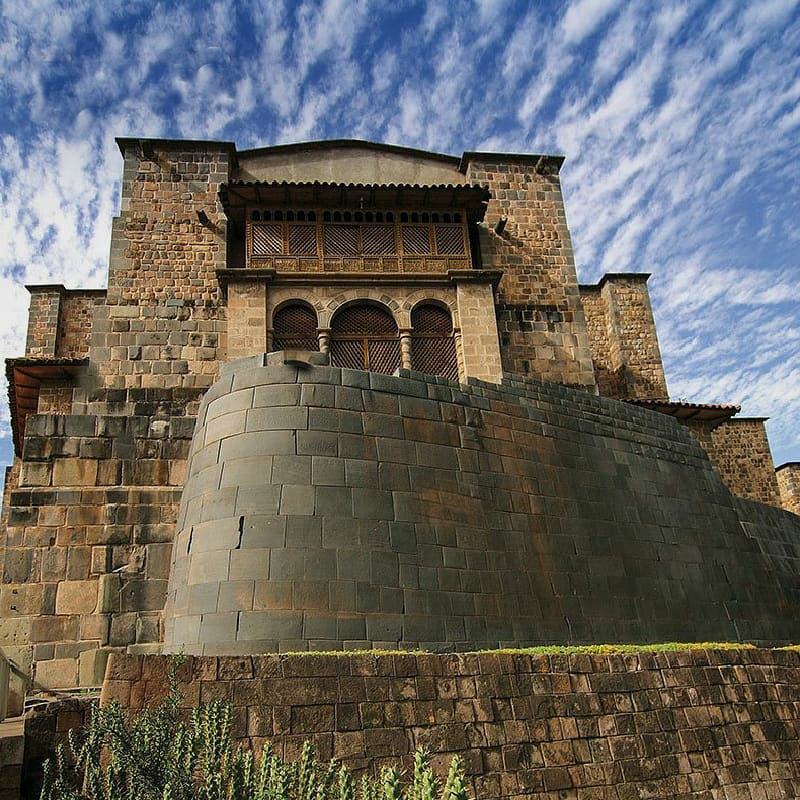
After the Spanish conquest, Coricancha’s foundations became the Church and Convent of Santo Domingo. Over the years, it underwent many changes, but Coricancha still shows the Inca’s great achievements in astronomy, architecture, and culture.
Marvel at the contrast between the smooth Inca stone walls and the colonial architecture above. Learn about how the Incas aligned the temple with celestial events, like the solstice, and imagine its former glory when the walls glittered with gold plates.
San Blas: The Artistic Neighborhood
The San Blas neighborhood is Cusco’s bohemian neighborhood by excellence. During Inca times, this place was important for Inca nobility, because historic records confirm that the remains of Pachacutec, the greatest Inca Emperor of all time, were found in this area.
After the Spaniards arrived, they placed colonial buildings instead of Inca architecture. In the current day, San Blas is a charming and popular area for tourists. People love Its narrow streets, whitewashed buildings, and artistic vibe. It’s a great place to explore the fusion of colonial and local styles.
Andean Colonial Archtiecture in San Blas
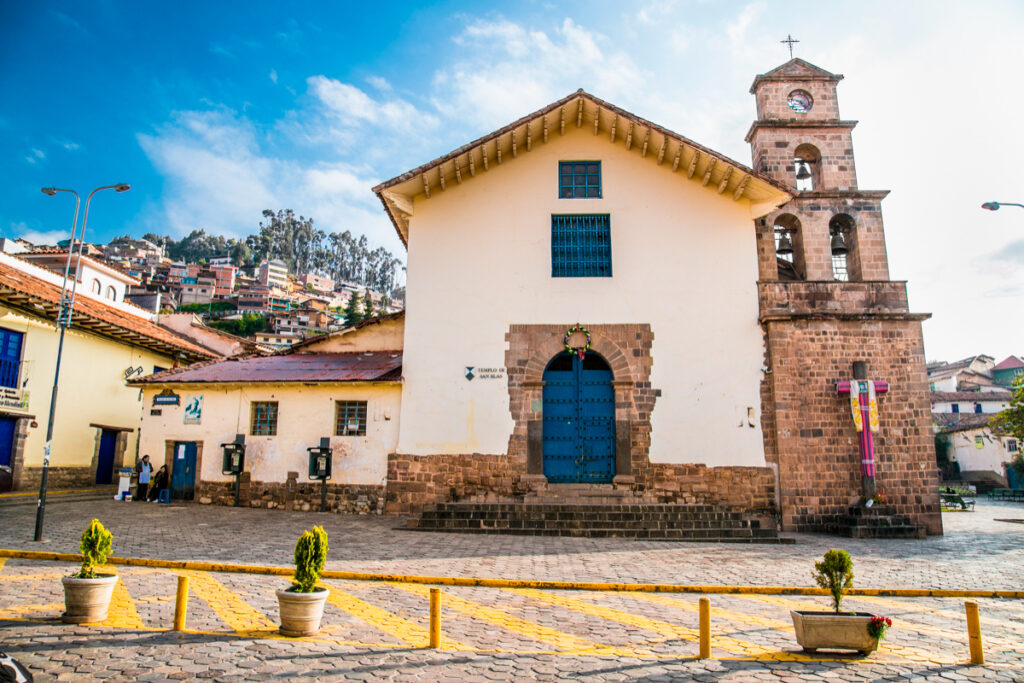
San Blas Church: Although an earthquake destroyed this church, Spaniards restored it later. This church is made of adobe, but it’s shown resistance to the time, The interior shows beautiful examples of Cusco school pieces of art, such as the intricate wood pulpits.
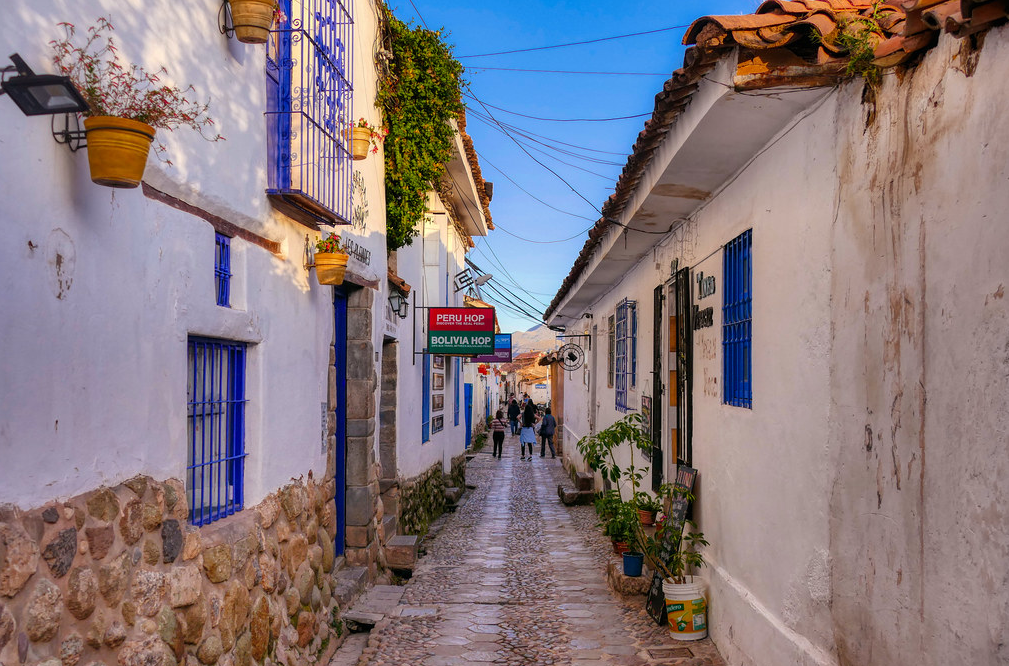
Streets: Streets in Cusco have their own story, so San Blas is no exception. Its narrow, lovely, and cobblestone alleys are the result of the clash of two totally different cultures. We recommend taking a stroll around San Blas streets in the afternoon!
Trivia: This neighborhood was called after San Blaise of Sebaste, a catholic Turkish priest popular among Spaniards of that time. To know more about this fascinating venue, take a look at our guide to this Bohemian Neighborhood.
San Francisco Church and Convent
Some minutes walking from the main Square, you’ll find the San Francisco church, in front of the square of the same name. A Spanish viceroy built this convent in 1572, and it combines Renaissance architecture with various influences.
You can admire its basilical base, three naves, and a stunning high choir, famous for its detailed wood carvings of Franciscan martyrs. The 1628 facistol in the choir has lovely, Arab-influenced inlays; it also has important Franciscan symbols. These features highlight its special role in religious ceremonies.
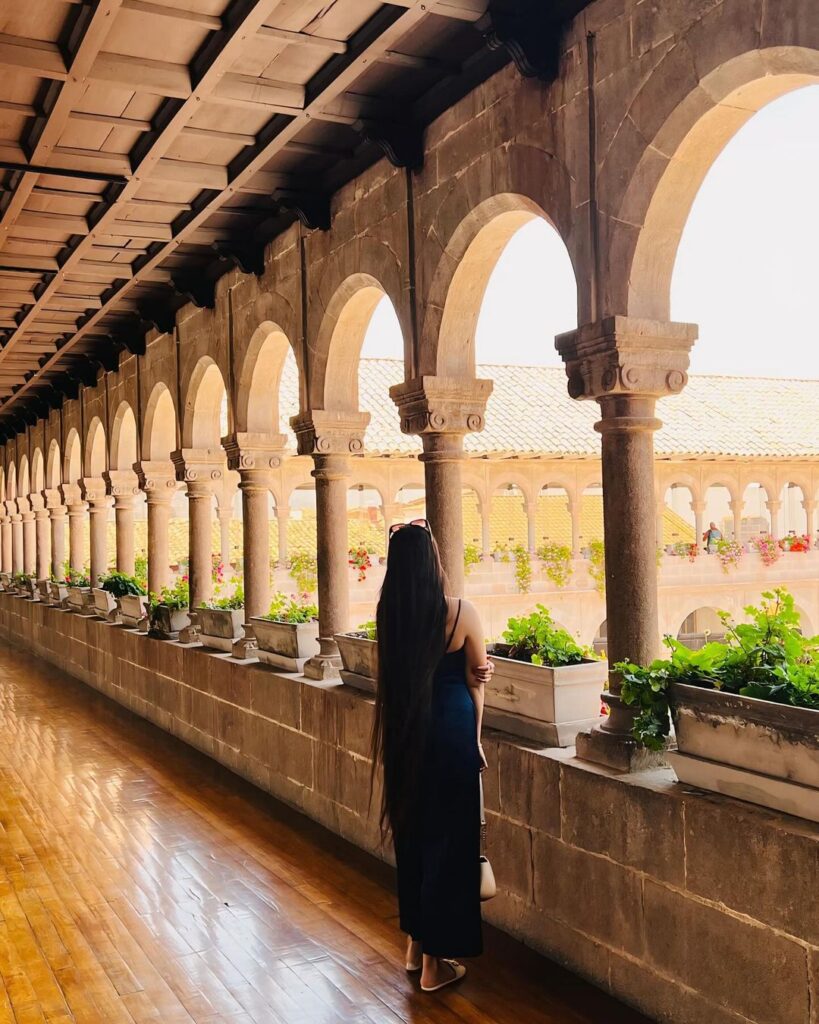
Inside the convent, you’ll discover some amazing Cuzco School paintings, like Diego Quispe Tito’s Judgment Day. This artwork beautifully shows the heavenly, purgatorial, and hellish realms. Another interesting piece is a large genealogical painting that measures 12 by 9 meters.
The catacombs and crypts beneath the church offer a respectful look at colonial burial practices, where human remains are kept close to sacred spaces. On the second floor, the library is a treasure trove with over 10,000 texts, including rare early printed books and Bibles in up to seven languages. The convent’s blend of art, religion, and culture is unique. It is a great place to explore Cusco’s colonial history and the Franciscan order’s lasting influence.
Discover Andean Colonial streets
Hatun Rumiyoc Street & Inca Roca Palace
This street is one of the most famous ones in Cusco, from the Quechua language, it could be rendered as “the place where the big stone is”. You can find here one of the most visited attractions in the city, the 12-angle stone.
Don’t forget to see the incredible precision of this stone wall: All of the rocks and stones placed here fit perfectly, and the most amazing part is that the Incas didn’t use mortar. You can see the same pattern in other Inca architecture spots such as Machu Picchu or Sacsayhuaman.
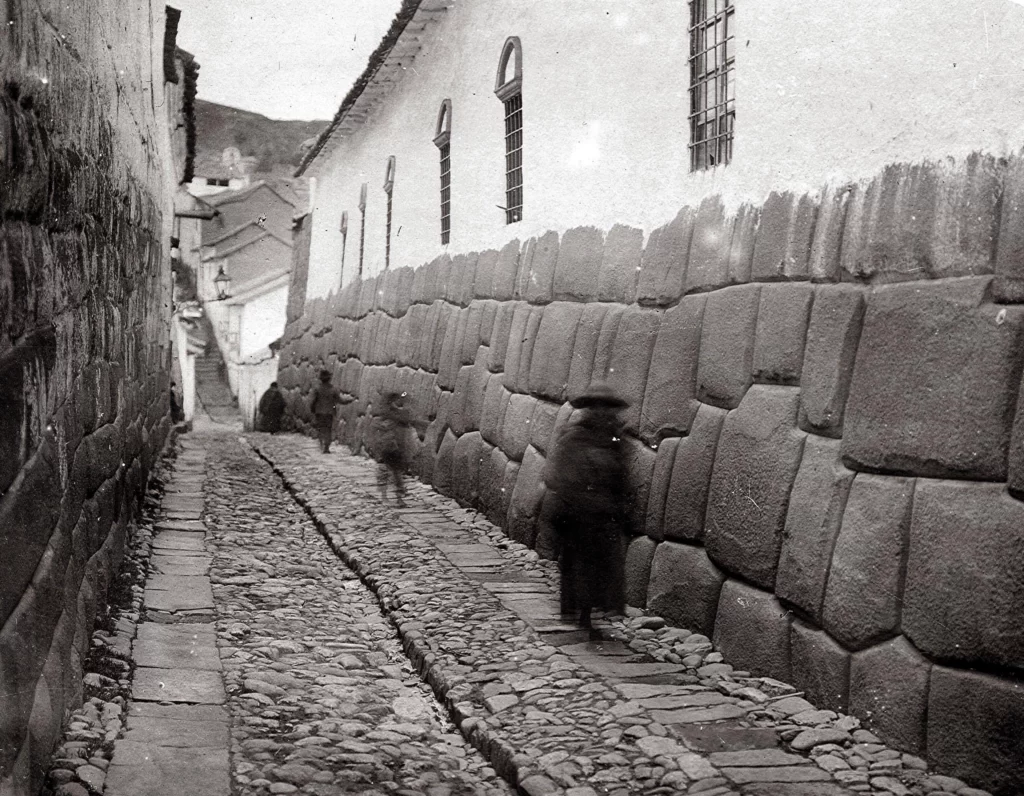
But these wonderfully placed stones are not the only attraction, you can find too the former palace of Inca Roca. Over its foundations, Spaniards built the archbishop’s house. Inside the house, the contrast of impressive Inca stone walls, and arched Renaissance-style in the courtyard is amazing.
Inside, the house you can also see the Museum of Religious Art, recognized as a Cultural Heritage of the Nation. It has 14 exhibition halls filled with beautiful colonial masterpieces. You’ll also find delightful sculptures, wooden carvings, and a richly embroidered pluvial cape.
Loreto Street
This street has a Quechua name too. “Intikijllu” means “sun’s alley.” This charming narrow alley connects the eastern area to Cusco’s Plaza de Armas and is part of the outer corridor of the historic Amaru Kancha and Acllawasi enclosures.

As you stroll along this street, you can appreciate the incredible skill of Inca architects: They expertly cut and fit the stone blocks to create strong and beautiful walls. These walls have a slight tilt and feature neatly aligned rows of stones in different sizes.
At the bottom, the stones are larger, gradually getting smaller as you go up. This design not only adds strength but also gives a lovely visual effect that showcases the unique style of Inca architecture. Although you can see the colonial influence in this street and the buildings inside it, taking a stroll around is definitely worth it.
A Walk Through Time
As you wander through the charming Cusco city, you’ll feel like you’re stepping into a rich tapestry of history. Each building and street tells its own story, from the ancient Inca walls to the beautiful colonial facades. The mix of cultures makes Cusco not just a city, but a vibrant living museum.
Believe us when we tell you Cusco’s Andean Colonial Architecture will amaze you. Thanks to the strength and creativity of two cultures coming together, there is so much for you to see! You’ll find the impressive fortress of Sacsayhuamán and the stunning golden altars in the churches that will leave you inspired.
Cusco has something for everyone. It’s for history buffs, culture lovers, and fans of stunning views. So, pack your bags and get ready for an unforgettable adventure in this incredible city! Keep in mind that Viagens Machu Picchu can assist you to know Cusco and its wonderful spots!
Our guides are experts in Andean culture, so they can give you even further details to maximize your experience. Contact us to take the first step into your adventure in the ancient land of the Incas. Cusco and Peru are waiting for you!
Viagens Machu Picchu, journeys that inspire, moments that last.

